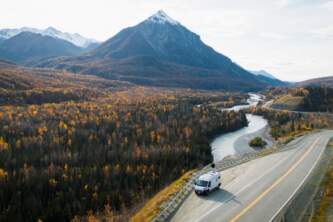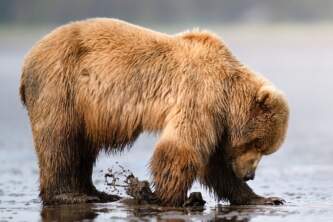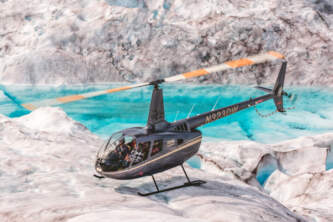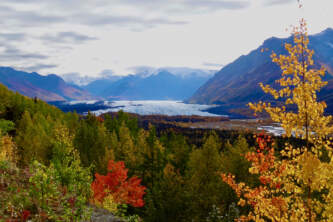Brad Got His Tunnel

By Bob Kaufman
Founder, Alaska.org
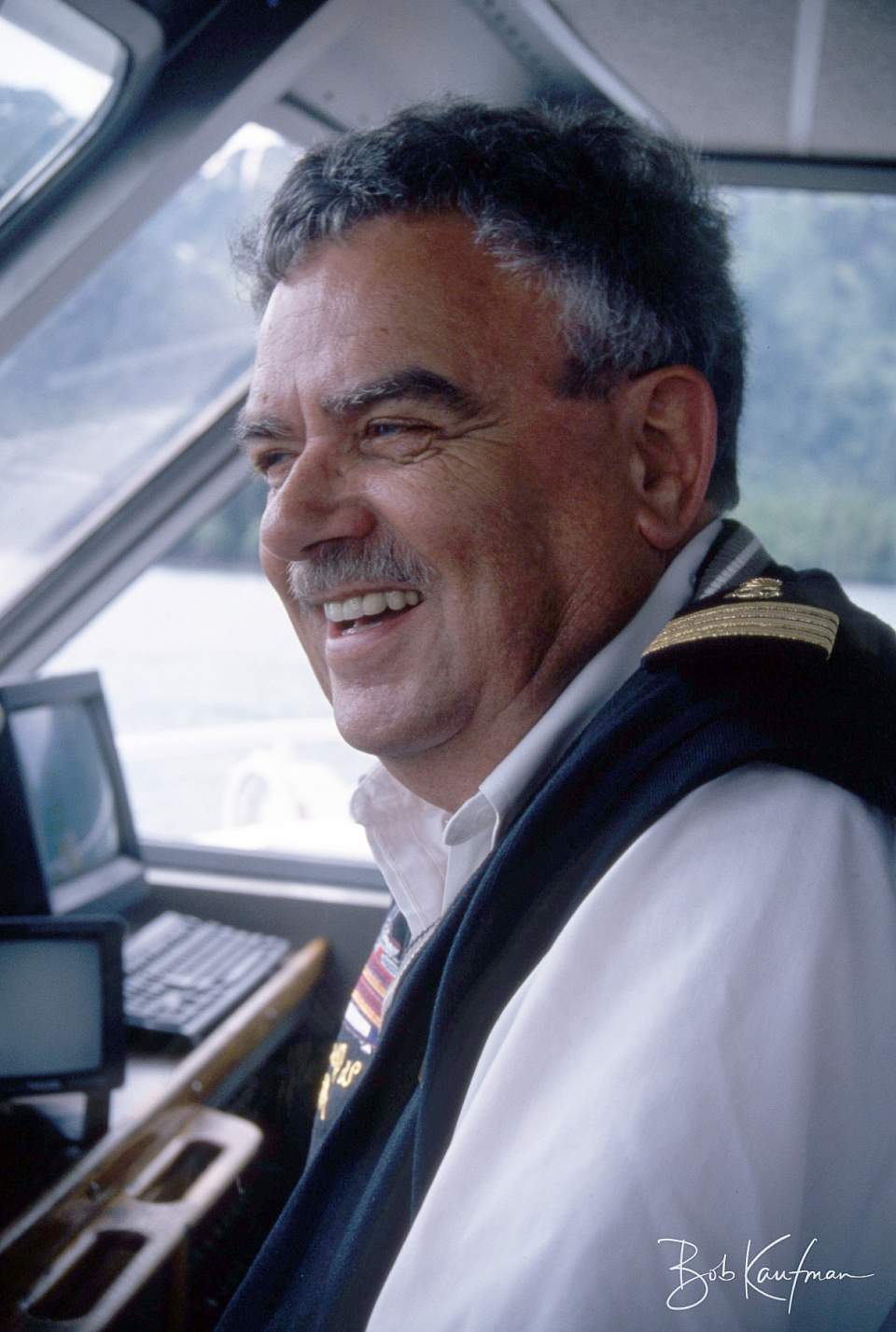
I made this portrait of Brad in 1996
I wasn’t a fan of altering the train-only Anton Anderson Memorial Tunnel to Whittier so that it could be shared with automobiles. The project—proposed in the 1990s and completed in 2000—made it possible for people to drive and haul boats back and forth to Whittier using cars, light trucks and RVs pretty much all day long. At the time, I worried that increased boat traffic would overrun the beauty and silence of the Western Prince William Sound.
But this was a view I kept to myself, especially around Brad Phillips, a pioneer and giant in Alaska tourism. Brad was one of my first advertisers and most important relationships during my early years in Alaska. And he was one of the project’s most ardent boosters.
An Early Friend in Alaska
A mutual friend in San Francisco introduced me to Brad before I moved here. I reached out to him before I arrived. He kindly offered me a desk upstairs in his office, which I used on and off for more than a year. Having access to a fax machine and being around others meant so much to me, given that I moved here knowing virtually no one in the business community.
Brad’s assistant Pauline walked me next door to look at a bare, 1970s décor apartment unit. I rented it on the spot, and lived in it for a good month—until a friend from Los Angeles came up to visit and incredulously asked, “How can you live in this place?”
Two years later, when I started Alaska Channel, Brad was one of my first advertisers. He was also one of my first video production clients. In 1995, he hired me to produce a new promotional spot for his 26 Glacier Cruse. I put my heart into that 15-minute film, and it showed. Soon after delivering it, I learned my video producer unwittingly included about 90 seconds of industry association footage that carried a license fee. I had to bring it up to Brad. The $2,500 fee would have broken me. Without hesitation, Brad agreed to cover it. He told me not to feel bad, and he meant it.
A True Alaskan Pioneer
Brad was a true Alaskan pioneer in every sense. He served as a state senator in Alaska’s early years. Brad knew the beauty of Prince William Sound like few others. He launched the first cruise tours of Prince William Sound in the 1950s and introduced the first catamarans ever used to carry tourists in the U.S. (His 26 Glacier Cruise, which he sold six years before his death, remains one of the most popular tours in Alaska.) It’s not surprising that he became one of he main proponents of the Whittier car tunnel. He was of a generation that wanted to open up Alaska and maximize access.
I am of a different generation. I came from the crowded cities of the Lower 48 to Alaska for its unique natural beauty. I cherished the silence of kayaking and camping in the Sound.
When naturalists would complain about the noise of the 26 Glacier Cruise when underway, or the extra commotion that might come from opening the tunnel to car traffic, Brad’s humor shut them down with a biting quip, “My clients don’t poop on the beach.”
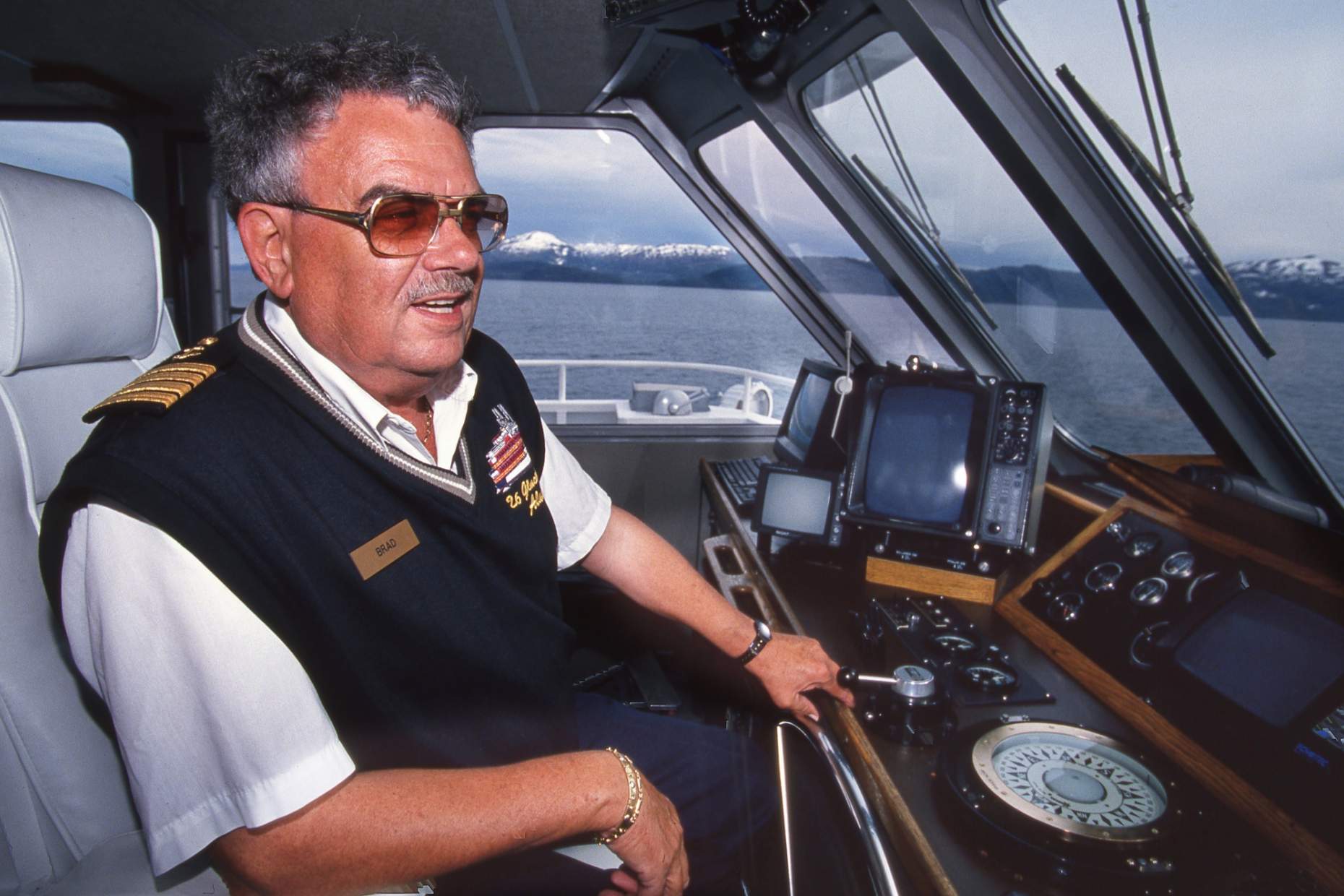
Brad's Dream Comes True
Day kayaking with my son Adam and the Provencios, July 2018
Day kayaking right out of Whittier (:41)Brad finally got his wish in 1998, when construction began in earnest, and the tunnel opened to vehicle traffic two years later.
Now that Whittier tunnel has been transformed, I use it. I enjoy gathering at the entrance in a wild valley surrounded on three sides by towering mountains, waiting for the portal to open on the half-hour to cars. I love exiting on the other side—where you emerge after three miles underground into a misting rain forest setting with a sweeping view of the Passage Canal fiord. It feels like you’ve crossed the threshold of adventure into another world.
We park our car and smell the invigorating salt air as we walk a block over to the Whittier Quad right on the waterfront. Our favorite first stop is Lazy Otter Café, owned by Kelly Bender and her husband, Capt. Mike, who runs Lazy Otter Charters. I got to know Kelly that summer in 1995 when I was on the boat shooting for Brad’s film, and she was the lead tour guide. Visiting Whittier means catching up with old friends.
Once every few summers, I’ll take the kids to Whittier for a day of kayaking. We just rent kayaks on the Whittier side, paddle the shoreline, and revel in the bounce and suck of the waves, the shrieks of the wheeling birds, and luminescence shimmering on the surface of the deep green waters. Often, we’ll pull ashore at some remote beach and beachcomb.
Camping with the Oxfords at Toboggan Beach, Late May 2016
Camping in PWS for Alaskaorg Blog (:27)The tunnel makes it convenient for multi-day trips into the Sound, too. We load up the car once with all our gear in Anchorage and deposit it right at the boat ramp in Whittier.
It All Worked Out
Despite my misgivings, opening the tunnel to car traffic did not ruin western Prince William Sound. Unlike other proposed roads in Alaska that might vitiate the character of pristine wilderness, the car tunnel merely added convenience. It’s still possible to experience the same timeless and serene marine wilderness, often without another person (or boat) in sight. And yet, it’s now much easier to visit and embark on trips, especially with a family.
In the two decades since the tunnel opened, I came to appreciate Brad’s vision, and my memories of him endure. He wanted to make it easier for others to access the natural beauty of the Prince William Sound that he so loved. And he certainly made life easier for me during those critical early years when I was finding my way in Alaska. Brad had a tireless will and a big heart.

